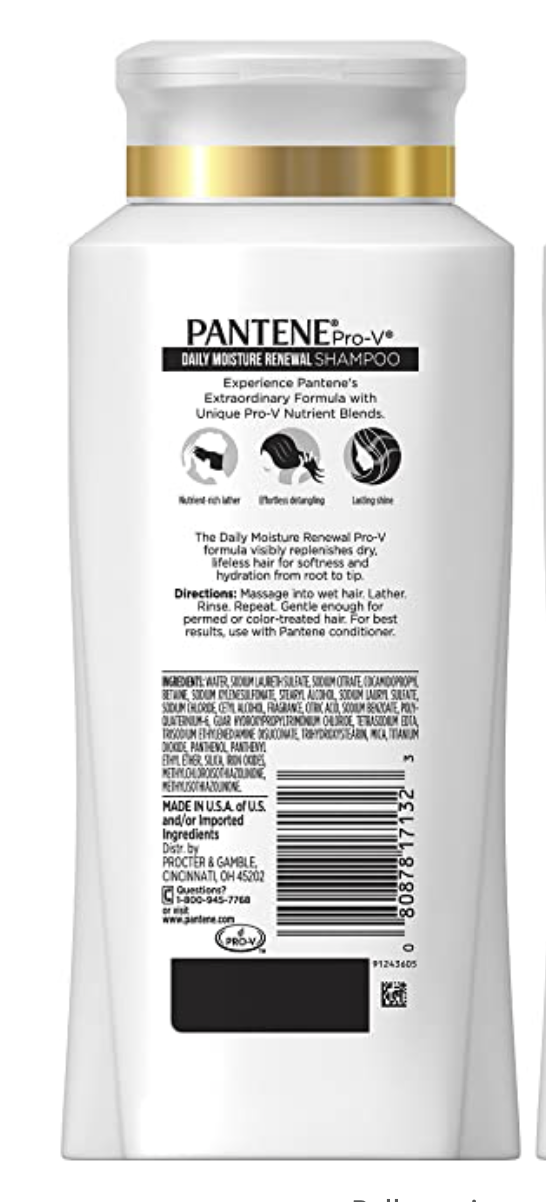
Ethanolamines – look for TEA, DEA, MEA
Ethanolamines are clear, colorless, viscous liquids with ammonia-like odors which have the combined properties of alcohols and amines (an organic compound derived from ammonia). Ethanolamines can cause asthma in healthy individuals. The most serious concern about these ingredients is the increased risk of cancer. With repeated and prolonged use of these ingredients, a carcinogen is formed called nitrosodiethanolamine (NDEA) which is absorbed through the skin. Approximately 68% of DEA or diethanolamine chemicals in shampoo penetrates our skin and remains on the upper surface of our skin after exposure.
What to Look for on the label: Monoethanolamine (MEA), diethanolamine (DEA), and triethanolamine (TEA)
- DEA is an ingredient that is like an emulsifier in shampoos.
- MEA acts as a scrubbing agent removing carbon dioxide and hydrogen sulfide from gases. It’s even used as a cleaner for nuclear submarines.
- TEA or triethanolamine acts as a fragrance and is used to adjust PH levels
Recommended: Find clean shampoos that do not have toxic ingredients like Paul Mitchell Clean Beauty Shampoos


Octinoxate, Oxybenzone, Benzophenone
Octinoxate also called Octyl methoxycinnamate or (OMC) is a UV filter. It can be detected in human urine, breast milk and our blood because it is rapidly absorbed through the skin. Octinoxate mimics estrogen and can disrupt thyroid function including organ and reproductive system toxicity.
Oxybenzone or benzophenone are common ingredients in sunscreen. Benzophenone is persistent, bioaccumulative and toxic (PBT). These chemicals are linked to cancer, endocrine disruption and organ system toxicity. It also is linked to the destruction of coral reefs.
What to Look for on the label: Octinoxate, o methoxycinnamate (OMC), parsol, parsol MCX, parsol MOX, escalol, 2-ethylhexyl p-methoxycinnamate, Benzophenone, ingredients containing the word benzophenone (for example benzophenone-2), BP# (for example BP2), oxybenzone, sulisobenzone, sulisobenzone sodium
Note: Check the label for OGX Shampoo as some contain octinoxate listed as ETHYLHEXYL METHOXYCINNAMATE.

Formaldehyde-releasing preservatives
Formaldehyde is present in many personal care products and considered a carcinogen. Most people become exposed to it by inhaling it from hair dyes and also by absorption through the skin. It is linked to Leukemia and allergies. Formaldehyde has been banned from use in cosmetics in Japan and Sweden.The Occupational Safety & Health Administration (OSHA) and the Environmental Working Group (EWG) listformaldehyde in keratin treatments as dangerous as repeated exposure can cause cancer.
What to Look for on the label: Formaldehyde, dimethyl-dimethyl (DMDM) hydantoin, imidazolidinyl urea, quaternium-15, diazolidinyl urea, and 2-bromo-2-nitropropane-1,3-diol (bromopol).


Sodium Laureth Sulfate
Sodium lauryl sulfate (SLS) is a cleansing agent used in skin-care products. It’s an additive that allows cleansing products to foam and removes unpleasant oily buildup in your hair. With long term use, it can strip your hair of its natural oils and creates a dry, frizzy texture. There is not much substantive research on the long term cumulative effects or its safety, so some experts say it is safe and some recommend avoiding it. At concentrations of higher than 2%, it can become irritating, however in shampoos this ingredient is rinsed out. It’s best to look for a safer alternative such as sodium coco sulfate which is a derivative of coconuts.
What to Look for on the label: sodium dodecyl sulfate, sulfuric acid, monododecyl ester, sodium, sodium salt, sodium salt sulfuric acid, aquarex me or aquarex methyl, salt, AI3-00356, Akyposal SD, aquarex me, aquarex methyl and sulfuric acid monododecyl estersodium salt.

Parabens
Parabens are used as preservatives in Shampoo to prevent the growth of microbes. It is an endocrine-disrupting chemical that is absorbed through skin. According to the US Environmental Protection Agency (EPA) these chemicals basically copy your body´s own hormones when it is rubbed on your body or washed down the drain seeping into your drinking water. This can disrupt your body´s endocrine system including the hypothalamus, ovaries and thyroid. Over time, frequent use of parabens is thought to cause an increased risk of breast cancer.
What to Look for on the label: methylparaben, propylparaben, butylparaben and ethylparaben
Recommended: Jason shampoos have no parabens, no sodium lauryl sulfate, no ethanolomines, no octinoxate, no oxybenzone, no benzophene
[1] Dodson, R. E., Nishioka, M., Standley, L. J., Perovich, L. J., Brody, J. G., & Rudel, R. A. (2012). Endocrine disruptors and asthma-associated chemicals in consumer products. Environmental health perspectives, 120(7), 935
[2] Ingredient Watch List: Ethanolamines (MEA, DEA, & TEA)—Potential Carcinogens (2012). Available Online: http://www.annmariegianni.com/ingredient-watch-list-ethanolamines-mea-dea-tea%E2%80%94potential-carcinogens. [3] Report on Carcinogens, Thirteenth Edition (2014) niehs.nih.gov/ntp/roc/twelfth/profiles/Nitrosamines.pdf.
-
Toxic 50 List
By Chemist BillDecember 21, 2021 -
Toxic Ingredients to Avoid in Lipsticks
December 29, 2021 -
5 Toxic Ingredients to Avoid in Hair Dyes
December 29, 2021

Search the blog
Article Categories
- All Articles (95)
- Rating Charts (1)
- Beauty & Skincare (17)
- FAQ (0)
- Hair Care (9)
- Health & Wellness (12)
- Anti-Aging (4)
- Kid's Health (0)
- Makeup (2)
- Men's Health (2)
- Oral Care (3)
- Sunscreen (7)
- Skin Tools & Treatments (10)
- Supplements (26)
- Videos (0)












